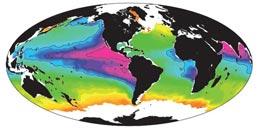 Endeavour shuttle astronaut Don Pettit sips coffee from a zero-g cup of his own invention during the STS-126 mission to the International Space Station. Credit: NASA TV
Endeavour shuttle astronaut Don Pettit sips coffee from a zero-g cup of his own invention during the STS-126 mission to the International Space Station. Credit: NASA TVFrom Live Science:
NASA astronaut Don Pettit loves his coffee. So it comes as no surprise that he found a way to drink coffee from a cup, instead of the traditional straw, on his day off Sunday aboard the International Space Station.
Drinking any liquid in the weightless environment of space could be a messy affair. With hot coffee, it could be a potentially scalding affair. So astronauts use silver pouches and plastic straws to sip anything from water to orange juice to Pettit's beloved space java.
"We can suck our coffee from a bag, but to drink it from a cup is hard to do because you can't get the cup up to get the liquid out, and it's also easy to slosh," Pettit told Mission Control while sending a video of his new invention to Earth.
Read more ....















































